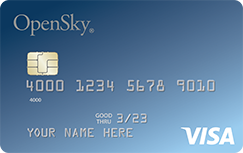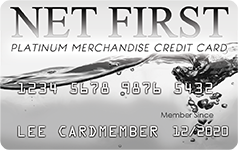Got Bad or Limited Credit? Here’s How to Choose the Right Card
When it comes to credit cards, there’s no doubt that the higher your score, the more likely you are to be approved for a card, and it may seem like most cards out there are designed for people with excellent credit. You may be surprised to learn, however, that there are plenty of credit card options available, whether you’ve got no credit history, bad/poor credit history, or even damaged credit history. We break down the two most popular options (and a different, third option) and explain the pros and cons of each.
In this post...
The two main types of credit cards for bad credit
The two most popular options for people with bad credit include secured credit cards and unsecured credit cards. These two card types are designed for people with less than perfect credit, and since most of the cards we mention in this article report to all three credit bureaus, they can actually help you improve your credit score through responsible use and on-time payment of your monthly balance. Let’s dive right in!
Unsecured Credit Cards
Unsecured cards, also sometimes referred to as subprime credit cards, are just like the cards you think of when you think “credit card” — the only difference here is that they’re built for people with low credit scores. How are they different, you ask? Well, the first things you’ll notice when researching these unsecured cards is that they all typically have:
- a comparatively low credit limit (think $300 – $1,000 to start)
- an annual, monthly, or program fee that can range anywhere from $6 – $99
- higher APR (annual percentage rate) – our research has shown APRs as low as 9.99% and as high as 34.99%
- a one-time account opening fee which will be deducted from your first month’s balance
Depending on the card and your individual credit history, 8 months to a year of timely payments can help lift your credit score and make you eligible for cards with more prime perks, such as no annual fee, higher limits, and in some cases, attractive rewards such as cash back on select purchases.
Our top picks for unsecured credit cards are below, or you can check out a complete list of unsecured credit cards for bad credit.
Secured Credit Cards
If you don’t qualify for an unsecured card, secured cards might be the way to go. Secured cards function the same way as unsecured cards, only they require a security deposit from a checking account in order to activate your card. Why the deposit? If you default on the credit card debt, the card issuer can cover the debt with your deposit. These deposits generally start at $200, but higher deposits can be made so that you can start out with (or build up to) a higher monthly spending limit — our research has revealed secured cards that can take $2,000, $3,000, or even $5,000 maximum deposits.
Secured credit cards work well for people with bad credit, but not everyone will be approved for a secured card. Past or current bankruptcies, long histories of missed payments, or even minimum score requirements can affect your ability to be approved for a secured card. That said, there are secured cards with no published minimum score requirement, such as:
- Green Dot primor® Visa® Gold Secured Credit Card
- Applied Bank® Secured Visa® Gold Preferred® Credit Card
- The First Latitude MasterCard® Secured Credit Card
- OpenSky® Secured Visa® Credit Card
Once you’ve established that you can pay your monthly bill on time for 8 months to 1 year, the issuer may convert your card from a secured card into an unsecured card and return your initial deposit to you (less any fees). Or, you may become eligible for a different unsecured card from the same or another issuer.
Is There a Third Option?
Unsecured store cards, while expensive in terms of the fees they charge, might be your answer. These cards are unique because they aren’t credit cards in the traditional sense — unsecured store cards can only be used at a designated online shopping portal, so can’t be used for things like dining out or booking air travel. What sorts of things can you buy with these cards? Shopping portals vary, of course, but we’ve seen everything from pet products to footwear to electrons and home decor — could be you need none of these items, but chances are you can find something you need.
Why consider these cards, you might be wondering? Some of the features we’ve seen in our research include:
- $500 unsecured credit lines
- guaranteed approval
- instant online approval
The ones we’ve found also state that they report to at least one major bureau, which is key if you’re looking to establish or reestablish a history of on-time payments, but it isn’t as ideal as reporting to all 3 bureaus. At the end of the day, though, we’d recommend going with an unsecured card with low fees or a secured credit card if you’ve got bad credit.
How to Choose The Best Credit Card for Bad Credit
This will come down to individual circumstances, but in general, we recommend you look for the following features when selecting a card:
- low cardholder fees — small fees can add up quickly, so look for lower-fee cards, whether it’s the annual fee, account opening fee, monthly maintenance fee, or otherwise.
- 3-bureau reporting — this is key, because you can’t improve your credit score if it’s not being reported to the credit bureaus! Watch out for cards that don’t report to all three bureaus.
- convertible — ideally you can convert your card into an unsecured card with lower fees and/or rewards perks in the future, once you’ve established a track record of on-time payments
Using Credit Cards for Bad Credit Responsibly
It should go without saying that responsible use of credit cards is the number one priority, and ultimately a requirement for reaching scores in the 700s and beyond. Credit cards for bad credit are no exception, so as always, you should make an effort to:
- pay your bill on time, every time — better yet, pay it on time and in full, as interest adds up quickly, especially with the higher interest rates commonly found with subprime credit cards.
- use your card, just not too much — you’ve got to spend in order to be able to make a payment, right? Just make sure you don’t use your card too much (see below).
- keep your credit utilization below 30% — there are lots of different opinions out there, but a common target is 30% of your total credit limit. That means that if you’ve got a limit of $500, never carry a balance of more than $150.
The Bottom Line
Just because you have bad credit doesn’t mean you’ll never have good credit. Getting a secured or unsecured credit card and using it responsibly is one of the quickest ways to build credit history. If you have enough for a security deposit, your best bet may be a secured credit card, otherwise look at unsecured credit cards with lower credit limits. Head on over and check out our full list of credit cards for bad credit.
Chase Sapphire Preferred® Card
With a 60,000 point new cardmember bonus when you spend $4,000 in the first 3 months of having the card, plus 2x points on travel and at U.S. restaurants — all for a $95 annual fee — this card is one of the top rewards card values available. Chase points are transferable to 9 airlines and 4 hotels, giving you the option of booking directly via these loyalty programs for some massively lucrative award redemptions in first & business class or at 5-star luxury hotels & resorts.
















